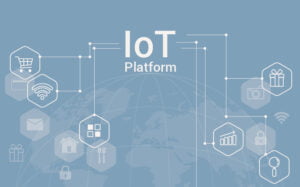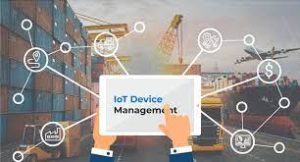The Internet of Things (IoT) has developed rapidly over the past decade, but one of its biggest challenges remains how to achieve efficient interconnection between devices of different brands and communication protocols. This interoperability issue directly affects the compatibility, scalability, and stability of IoT systems.
In this article, we explore how to solve this problem through technical strategies, including the selection of standardized IoT communication protocols, the application of edge computing, and how to build unified data models. We aim to provide a comprehensive guide to achieving IoT device interconnection and improving multi-protocol IoT connectivity.
Why is IoT Device Interconnection Important?
Today’s IoT landscape includes everything from smart home bulbs and sockets to industrial sensors and controllers. These devices often fail to communicate effectively due to:
- Different brands use different IoT communication protocols (e.g., Zigbee, LoRa, Wi-Fi)
- A lack of standardization in data formats and communication methods
- High system integration costs from extensive custom development
Significance of Device Interconnection:
- Improved Device Connectivity: Enabling seamless interaction between various devices
- Reduced Maintenance Costs: Decreased complexity in system integration and subsequent maintenance
- Enhanced System Scalability: Easy addition of new devices and support for future upgrades
Challenges in IoT Device Connectivity
To achieve how to connect IoT devices effectively, we must overcome key obstacles:
1. Protocol Fragmentation Common IoT protocols include:
There are numerous communication protocols in the market, such as:
- Zigbee: Widely used in smart home devices
- LoRaWAN: Low-power wide-area network protocol, suitable for industrial and agricultural applications
- MQTT: Lightweight message queue protocol, commonly used for cloud communication
- Matter: A unified standard addressing IoT interoperability
Problem: Devices typically support only a single protocol and cannot directly communicate with devices using other protocols.
2. Non-uniform Data Formats
Different devices have varying data structures and formats. For example, a temperature sensor might send data in JSON format, while another device might use XML format. This inconsistency increases the complexity of data parsing.
3. High System Integration Costs
IoT systems require extensive custom development, including protocol conversion and data format processing. This is not only time-consuming but also increases the complexity of subsequent maintenance.
How to Achieve Multi-Protocol IoT Connectivity?
1. Use Standardized IoT Communication Protocols
Matter Protocol: A Common Language for IoT Devices
Matter is an open-source IoT communication protocol launched by the Connectivity Standards Alliance (CSA), supporting multiple communication technologies including Zigbee, Wi-Fi, and Thread.
Matter's Features:
- Supports multi-brand device interconnection
- Provides secure device communication and control
- Simplifies the device certification and integration process
Matter's Advantages:
- User-Friendly: More intuitive device installation and configuration
- Broad Compatibility: Supports mainstream brands and protocols, such as Apple HomeKit, Google Home
Use Case: Connecting Smart Home Devices with Matter
Imagine your home's light bulbs, smart plugs, and sensors use Zigbee, Wi-Fi, and Thread, respectively. The Matter protocol allows these devices to work together seamlessly, without the user having to worry about the differences in underlying protocols.
2. Use Edge Computing Gateways
Edge gateways act as intermediaries, translating between multi-protocol IoT connectivity scenarios.
Edge Computing Gateway Functions:
- Protocol Conversion: Supports multi-protocol communication including Zigbee, LoRaWAN, MQTT
- Data Processing: Converts device data into unified formats
- Local Intelligence: Uses edge computing to reduce cloud load and improve system response time
Use Case: Edge Gateway Applications in Smart Factories
In industrial settings, different types of sensors, such as temperature sensors using LoRaWAN and vibration sensors using Zigbee, are integrated through edge computing gateways. These gateways process the data uniformly before sending it to the industrial cloud platform.
Edge Computing Gateway Workflow:
Device A (Zigbee) --> Edge Gateway --> Unified Data Format --> Cloud Platform
Device B (LoRa) --> Edge Gateway --> Unified Data Format --> Cloud Platform
3. Build Unified Data Models
Unified data models can standardize data from different devices, making it easier for systems to understand and process.
Data Model Example:
| Property | Data Type | Unit | Description |
|---|---|---|---|
| Temperature | Float | °C | Current environmental temperature |
| Humidity | Integer | % | Current environmental humidity percentage |
| Device Status | String | N/A | Device operating status (ON/OFF) |
4. API Abstraction Layer
Standard API endpoints for device management:
- Device Control:
/device/{id}/control - Data Query:
/device/{id}/data
5. Choose an Excellent IoT Platform
Important capabilities for achieving IoT device interconnection::
- Multi-protocol IoT connectivity
- Support for MQTT, CoAP, LoRa, Zigbee, Matter
- Protocol gateway capabilities
- Data Processing
- Real-time analysis
- Visualization tools
- Data storage solutions
- Device Management
- Batch registration
- OTA updates
- Monitoring capabilities
Platform Comparison:
| Platform | Protocols | Key Features | Use Cases |
|---|---|---|---|
| AWS IoT Core | MQTT, HTTPS, LoRa | Cloud management, analytics | Smart homes, industrial IoT |
| Azure IoT | MQTT, AMQP, HTTPS | Stream processing, edge computing | Smart cities, enterprise IoT |
| Google Cloud IoT | MQTT, HTTP | Cloud integration, scalability | High-performance systems |
| ThingsBoard | MQTT, CoAP, HTTP | Open-source, visualization | Small-medium projects |
Summary
To enable future-ready IoT device connectivity, we recommend:
- Building unified data models and API layers
- Using IoT communication protocols like Matter for home automation
- Applying edge computing for protocol bridging
Build Seamless IoT Device Connectivity with ZedIoT
Achieving seamless IoT device interconnection across brands and protocols can be complex, but with the right platform, it's possible. At ZedIoT, we provide:
- ✅ End-to-end IoT device platform development
- ✅ Unified IoT device connectivity for multi-protocol systems
- ✅ Protocol bridging and cloud integration
- ✅ Fast deployment with our IoT Device Rapid Cloud service
Need expert help to connect your IoT ecosystem?
???? Contact our team for a custom solution.


